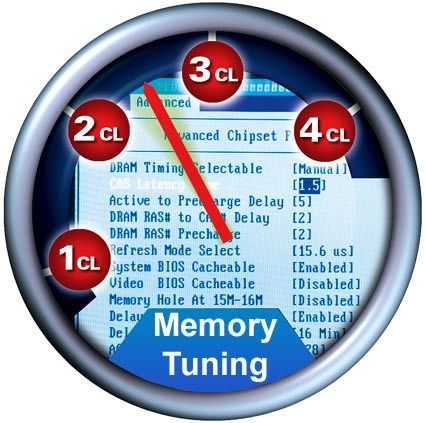How to Speed up Your RAM
Introduction
It's official: DDR400 memory is now the formal standard. Now that the Jedec committee has made its decision, RAM and motherboard makers finally have some guidelines on integration. DDR400, a.k.a. PC3200 RAM, had been plagued by incompatibility issues and an embarrassing lack of performance improvements. Without any official standard at all, trying to find a perfect match between RAM and the motherboard had been like playing poker blindfolded.
Admittedly, running fast DDR400 RAM is still not without its problems. The older DDR-1 technology runs up against 400 MHz memory clock speeds like a bull against a brick wall. Once launched, the DDR-2 standard will provide an entirely new design for RAM chips, changes to the board layout and decreased signal voltage - and that means clock speeds of up to 667 MHz. Don't expect the new technology until late 2003, though. Until then, you can optimize your BIOS settings to harness every little bit of DDR400 RAM you have or to resolve stability issues.
Older systems also stand to gain from the new modules. Even if you can't run the DDR400 modules at their top memory bus frequency of 400 MHz, you can still tweak the timing parameters to maximize performance at lower clock speeds. Faster memory modules are ideal for this purpose. More often than not, tightening your CAS latency or RAS-to-CAS delay will speed up your system more than jacking up your memory bus would. This article explains the concepts and technologies of memory timings and provides some tweaking advice. This information applies equally to RAM standards such as DDR333 and DDR266, allowing you to tweak just about any system.
Get Tom's Hardware's best news and in-depth reviews, straight to your inbox.
